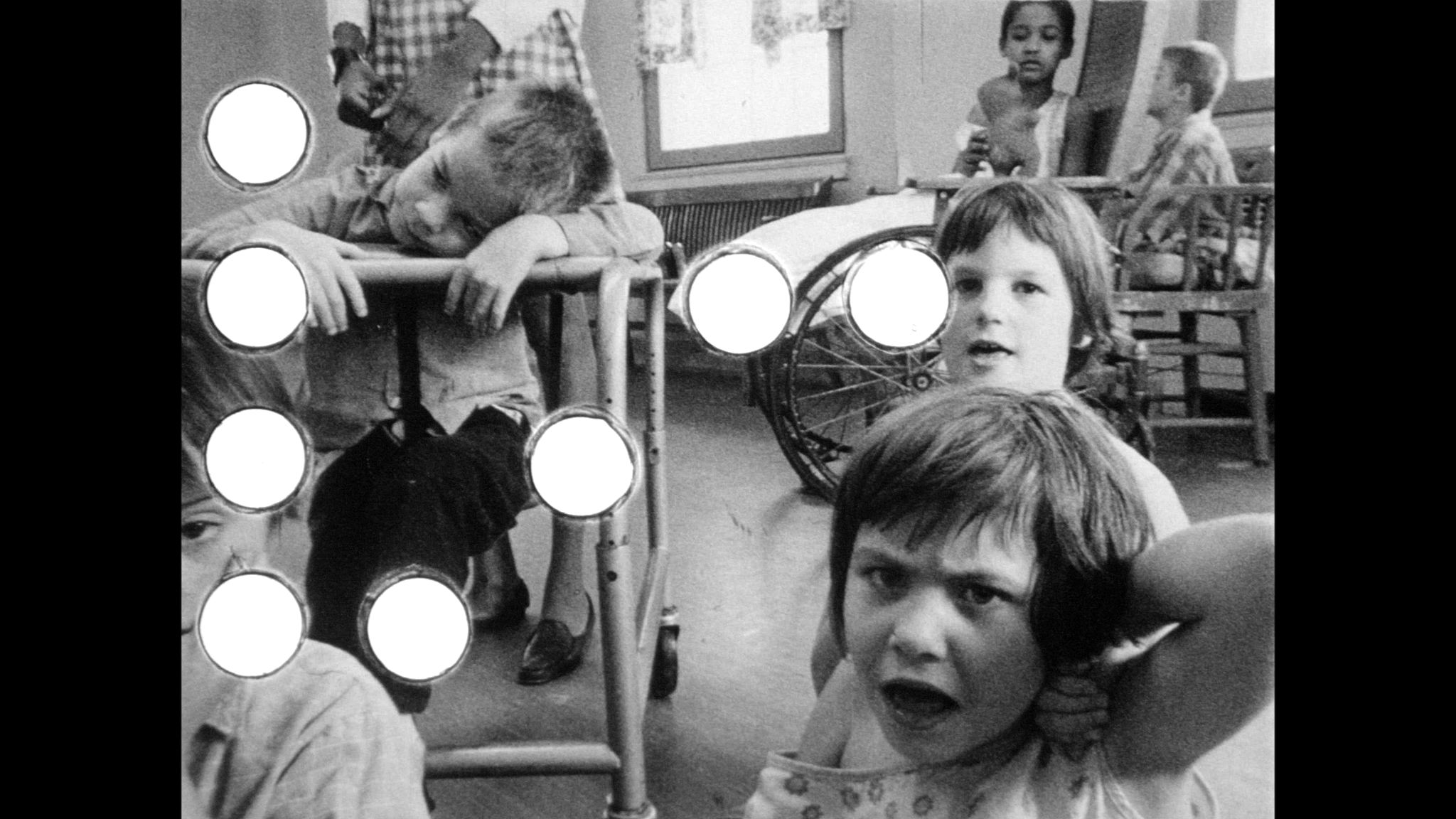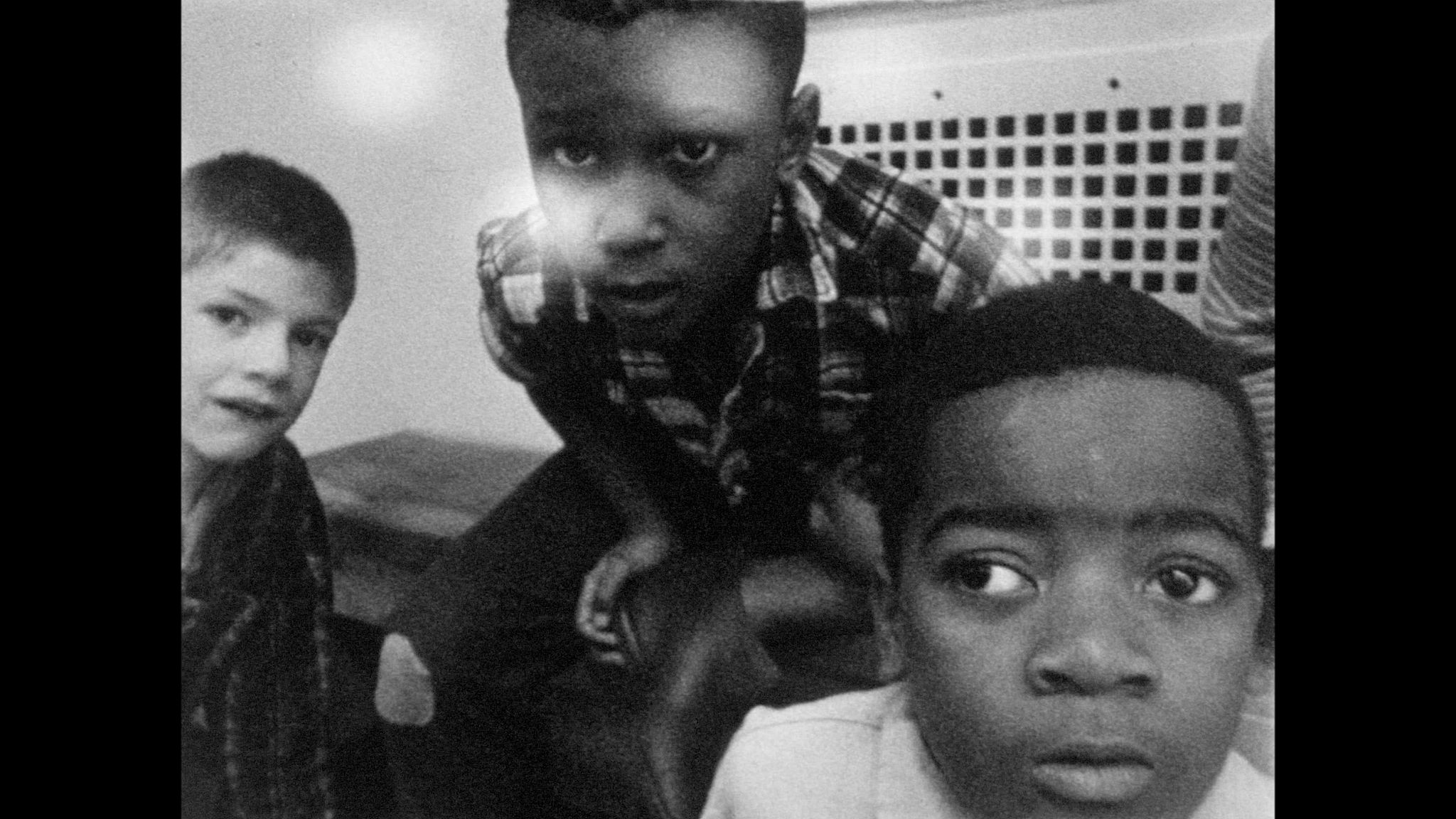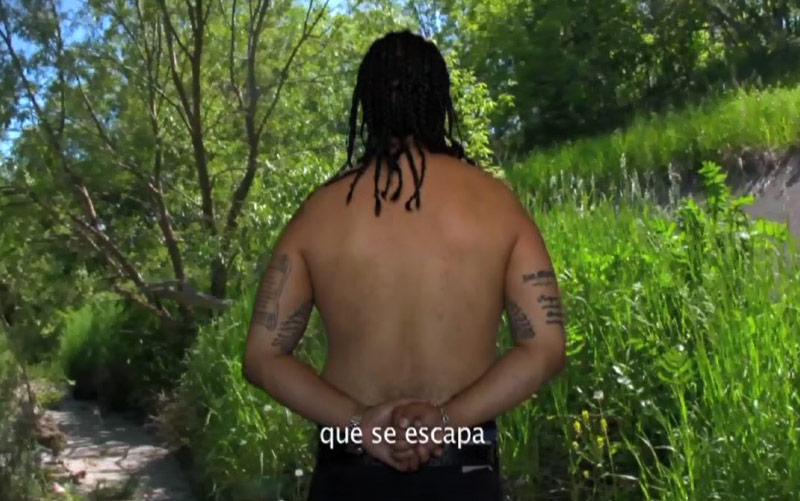Mo is the director of La Saison Video, an online portal (http://www.saisonvideo.com) that pairs movies that are temporarily on view. In late 2016 Scrapbook (18 minutes 2015) will be paired with Watch My Back (part one) (10 minutes 2010) by Jorge Lozano.
Mo Gourmelon: What was the starting point of your movie Scrapbook? How have you returned to these images 40 years after they have been made, and how did you make selections from these images of Jeffrey Paull’s?
Mike Hoolboom: Some pictures can take a long time to see. It’s hard to feel that today, when pictures arrive in our cameras before we can see them. But some images only come into focus after many years. Some instants in our lives can be so crushing that the turn to face them can last an entire lifetime.
The images in Scrapbook were made in 1967 in the Broadview Developmental Centre in Ohio. It was a live-in joint for mostly kids who had some kind of mental challenge. My friend Jeffrey Paull was hired fresh out of Boston University as a kind of audio-visual healer. He was tasked with setting up a darkroom (chemistry, mixing trays – no instant snapshots were possible at that moment), and teaching the kids how to shoot photographs, develop the film and make prints. They spent most of their lives on the grounds, so their subjects became, almost inevitably, one another. In another words, it was a project of group portraiture. While Jeffrey was there, he made some 16mm footage, not much as it turns out, less than half an hour altogether, ten rolls of 16mm shot with a wind-up Bolex camera. I used most of this footage, though none of the colour (he shot two rolls of colour) that was made outside, and has a different feeling tone.
Jeffrey was one of my media profs at Sheridan College, which I attended in the early 1980s. He was the second person I had ever met who saw the world as an artist, as an unfolding set of questions and uncoverings. I went to college knowing that I wanted to make movies, but it wasn’t until I drifted to the nascent film co-op around the corner from where I lived that I finally saw the kinds of things that were urgently compelling. That place was called the Funnel, and it featured a hundred seat theatre built by the membership, along with modest production gear, and a collection of work available for distribution. Like the old Hollywood studios, it was a vertically integrated enterprise of production, distribution and exhibition. They ran two screenings most weeks, and guests arrived from around the world. I couldn’t tell what was happening most of the time, why these strange forms appeared, even what most of the work was about, but none of that seemed troubling. It was part of an anti-capitalist front, and that was seemed more than enough.
Mo: Did you meet Donna Washington, one of the patients of the psychiatric hospital? She remembers and testifies, although in the end she says that she prefers that you use an actress’s voice instead of her own.
Mike: Jeffrey gave me the footage he had made in Ohio ten years ago, and I watched it and marvelled and then put it away. It needed more time. Then I thought I should try to find someone who was in the original footage. The internet is very helpful for these searches. I found Donna through an online ad, and she was interested in seeing herself from those many long years ago. I sent her the footage, and we arranged a time where she would see it for the first time, and comment on it while she watched. I also asked her a lot of questions. I was particularly interested in her relationship with the camera, with the project of portraiture as it relates to her own autism, and her memories of Jeffrey. She was extraordinarily articulate, she had done years of therapy, and had given voice to her journey many times. Her observations around perception are so vivid and strong. The way she could identify with, even become, a chair or a drape or a colour. Her ability to articulate her very particular emotional responses continues to feel like a gift.
Mo: The first time I saw Scrapbook screened, I was really impressed by Donna Washington’s comments, their clearness in contrast with the images of children and teenager’s bodies. Comments such as: “I didn’t have a body yet. That came later.” Then: “Jeffrey taught me a lot about how to see a face. How to, receive a face. What Jeff showed me with his camera is that you don’t have to get stuck in someone else’s face.” There is a gap between these existential declarations and generally accepted ideas about autism.
Mike: Autism is a word that describes a pretty wide range of conditions, language can be such a blunt instrument. It’s true though that we never hear any of the onscreen kids speak in sync sound, there are pictures but not sounds, what the movie makes possible is a time travel that brings a faraway adult voice back into these small bodies. She marks and remarks on them. I believe, though I can’t know this for sure, that many of the sentences Donna offered up had been spoken before. She is still performing a version of herself, like we all do. Her long journey from a feeling world that was often overwhelming, and where the boundaries of the self were troubled and uncertain, to a place where she can stand and speak from her own subject position, is a passage that feels lined with words, descriptions of her past and future state. Though each of her sentences has roots in the body, she isn’t talking about theories or ideas about experience, somehow the words are an integral part of the experiences that they are describing. She has had to recreate a home in language, even as she has had to reimagine her body as her own. How do you receive a face when you can’t tell for sure where your face begins and ends? As Donna so eloquently describes, it was by coming to terms with the face of someone else, that she was able to identify and reclaim a face that she could call her own.
Mo: You say in your film that we hear a “faraway adult voice (put) back into these small bodies.” Is this the reason why you chose Watch my back part one, Jorge Lozano’s film, to be shown with Scrapbook? In Jorge’s movie we don’t see disturbed faces, only a back, there is no sound and the subtitles take place of the voice-over. The past is coming back to understand the present.
Mike: I think Jorge’s movie is one of the most important ever made in Canada. It offers us a subject and subjectivity that is rarely shown in fringe media, an immigrant underclass (Fred Moten prefers the term undercommons). With great sensitivity, the artist protects the face, even the voice, of his subject, so he has his charge facing away from the camera. We are offered his back, even as he no doubt is offered the backs of many white people he has encountered here in the multi-cultural fantasia of Toronto. While the gang violence he describes with such intimacy is far removed from Donna’s experiences, in both instances we are able to gain entry into a marginalized person’s experience. And both of these people speak to us, very directly, with great articulation and energy. In both cases, language is a marker of belonging and power, an entry portal into a world that refused them both, for very different reasons, so they had to develop an outsider’s speech.


